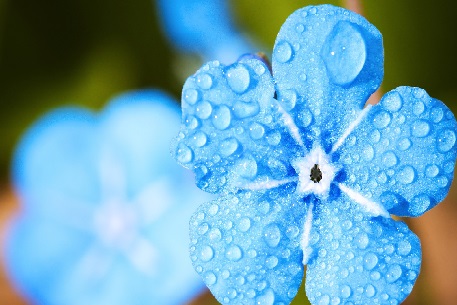
Transport in Flowering Plants
Water Uptake
Root hair cells are long, with a large surface area to increase the rate of absorption of water by osmosis and ions by the process of active transport. The outer layer of the root is the epidermis.
There is high water potential in the soil and low water potential in the root hair cell as the root hair cell has a concentrated cell sap. Due to the sap, osmosis occurs and water/ions move from the soil to the root hair cells, down the water potential gradient. The inorganic ions and water travel to the xylem tube which is responsible for taking the products up to the leaves. The xylem transports the water and ions up the xylem tube from the root to the stem through a process called capillary action. The water and ions are then absorbed by the cells of the leaves.
Investigation of the pathway of water through the above-ground parts of a plant:
1. Cut the base of a fresh stalk of celery under water.
2. Place the base in a beaker of water stained with red food dye. Leave it in bright light at room temperature in a breeze.
3. Note the red dye moving up the stalk and along the veins of the leafy parts.
4. Cut across the stalk and note the curve of rd dots close to the outer edge.
5. If a thin section is examined under a microscope, it will be the stained red xylem.
Transpiration
It is the evaporation of water at the surfaces of the mesophyll cells resulting in the loss of water vapour from the leaves through the stomata.
Water is constantly being taken from the top of the xylem vessels to supply the cells in the leaves. This induces the effective pressure at the top of the xylem vessel, so the water flows up. This flow is known as the transpiration stream. The root hair cells provide a large surface area through which water can be absorbed. This increases the quantity of water that moves into the plant.
The hollow xylem vessels provide an easy pathway for water to flow all the way from the roots to the top parts of the plants. The air spaces inside the leaf increase the surface area for evaporation, thus drawing more water out of the xylem. Lastly, the open stomata allow water vapour to easily diffuse out of the leaf. This reduces the water inside the leaf encouraging more water to evaporate from the surface of mesophyll cells.
A force drags water up from root hair cell to the leaf. This force is known as the transpiration pull. The lower epidermis has guard cells. Water comes out from the air spaces. This decreases the water potential in the air spaces, causing it to flow to the mesophyll cells. Root xylem is continuous with stem xylem which is continuous with leaf xylem. Thus, water moves in a form of a stream with the help of transpiration pull.
Factors Affecting the Rate of Transpiration
● Air currents: When the air is still, the area surrounding the leaf becomes saturated with water vapour thus no loss of water vapour occurs. Whereas moving air speeds up the rate of transpiration.
● Temperature: Transpiration occurs more rapidly when the surrounding air temperature is higher. When the sun shines on the leaves, they absorb the heat causing them to release water vapour.
● Humidity: Humid air means that it contains a lot of water vapour. Thus, when the air is humid, the transpiration rate will be slow as compared to dry air.
● Light Intensity: During daylight, the stomata in the leaf are open. This gives way for the water vapour to diffuse out from the leaf into the atmosphere. At night time, the stomata remain closed, and transpiration is greatly reduced.
Wilting
The rate of evaporation is faster than the rate of absorption. If plants have no access to water for a long period, then the cells in plants lose water and fail to support the plant. As a result, the roots may not be able to take up enough to replace it. Thus, the plant wilts.
Translocation
Translocation is the movement of the prepared food material i.e. sucrose and amino acids, in phloem from the source to the sink. Sources are regions of production while the sink refers to the regions of storage.
Glucose is formed into the sources, usually the leaf. This glucose changes into sucrose, amino acids, and fatty acids. Sucrose and amino acids travel further to the ink. When they reach the sink, sucrose sometimes changes back to glucose, and amino acids change into protein. Sucrose and amino acids move into the sieve cells. The sieve cells have to respire. Respiration can never occur with sucrose so it has to change back to glucose. Sucrose from phloem is broken down by enzymes.
Xylem and Phloem
Xylem is made up of four to five different types of cells. One of them is the xyelm vessel. It transports water and mineral salts from roots to the leaves. The Xylem vessel is a long, hollow vessel without any crosswall in adjacent cells thus providing a continuous pathway for water flow. There is no cytoplasm and organelles present in them for the maximum transport of water and mineral salts. The walls are made of cellulose and lignin, which make it a dead cell. The walls of Xylem vessels are riding due to lignification.
Phloem transports food from the leaves to the rest of the plant. There are two cells in the Phloem: Sieve cells and Companion cells. Sieve cells transport prepared food i. e. sucrose and amino acids. The companion cells provide ATP energy. The sieve plate is the adjacent walls between the two cells through which sucrose flows.
